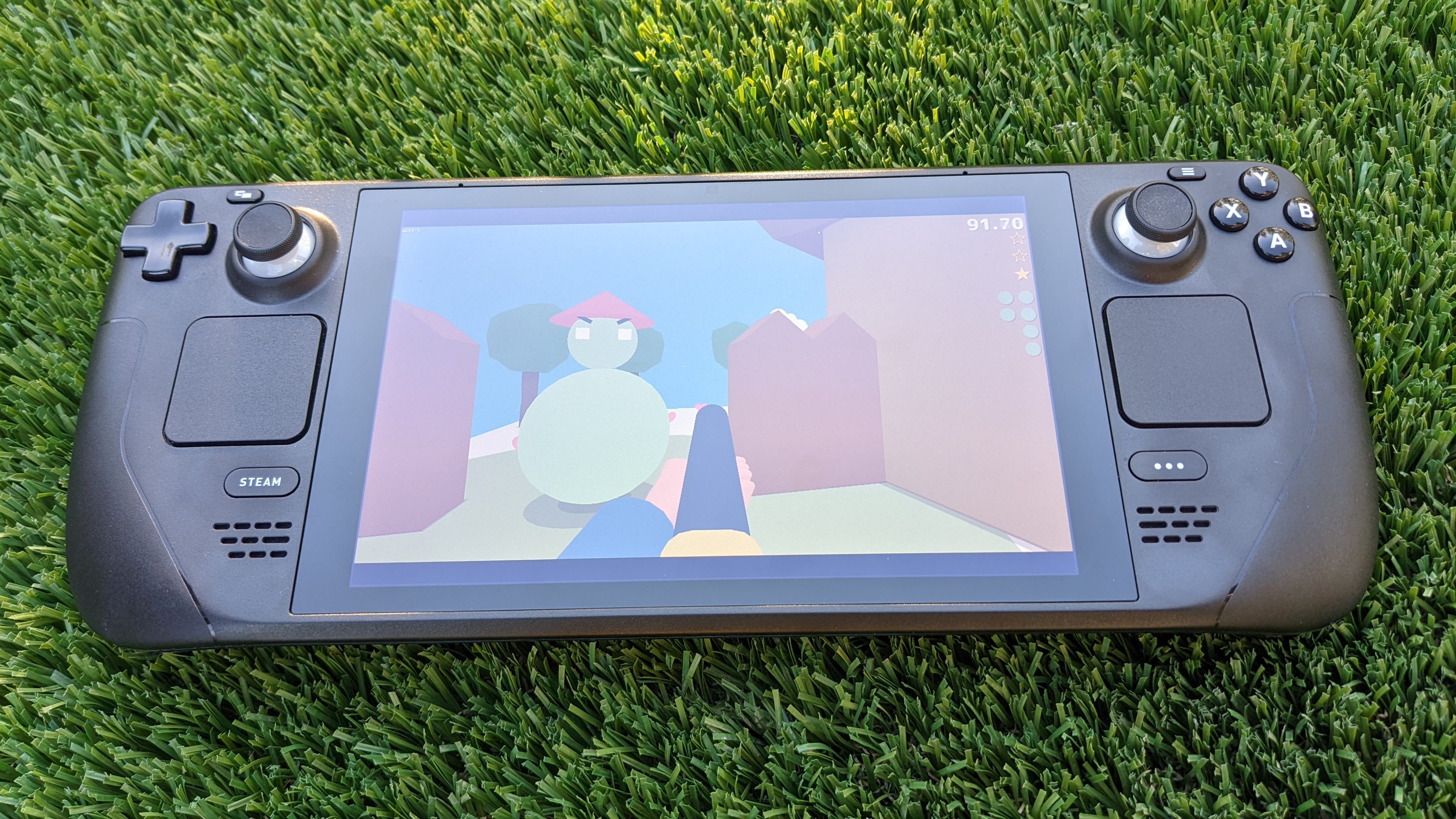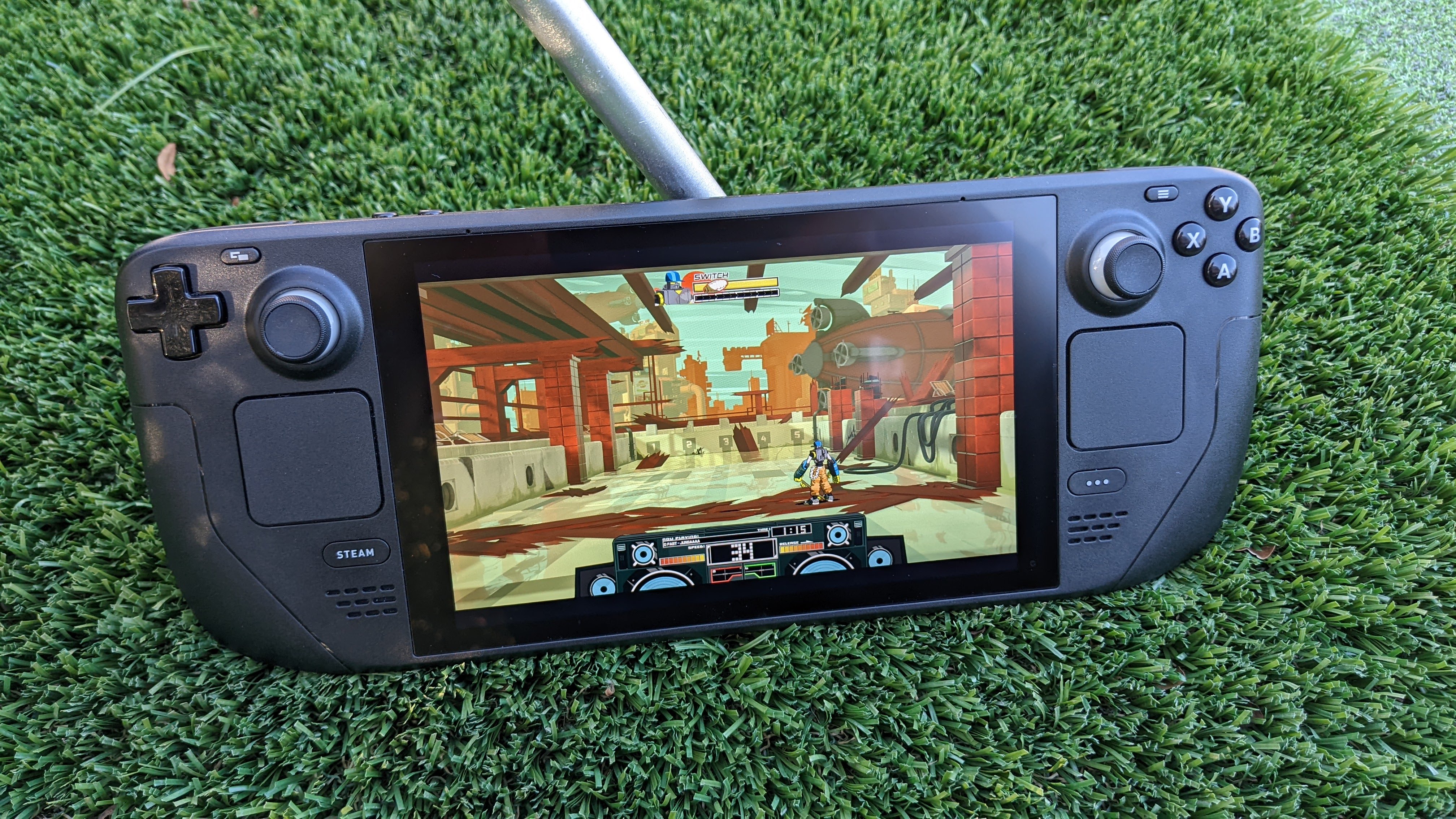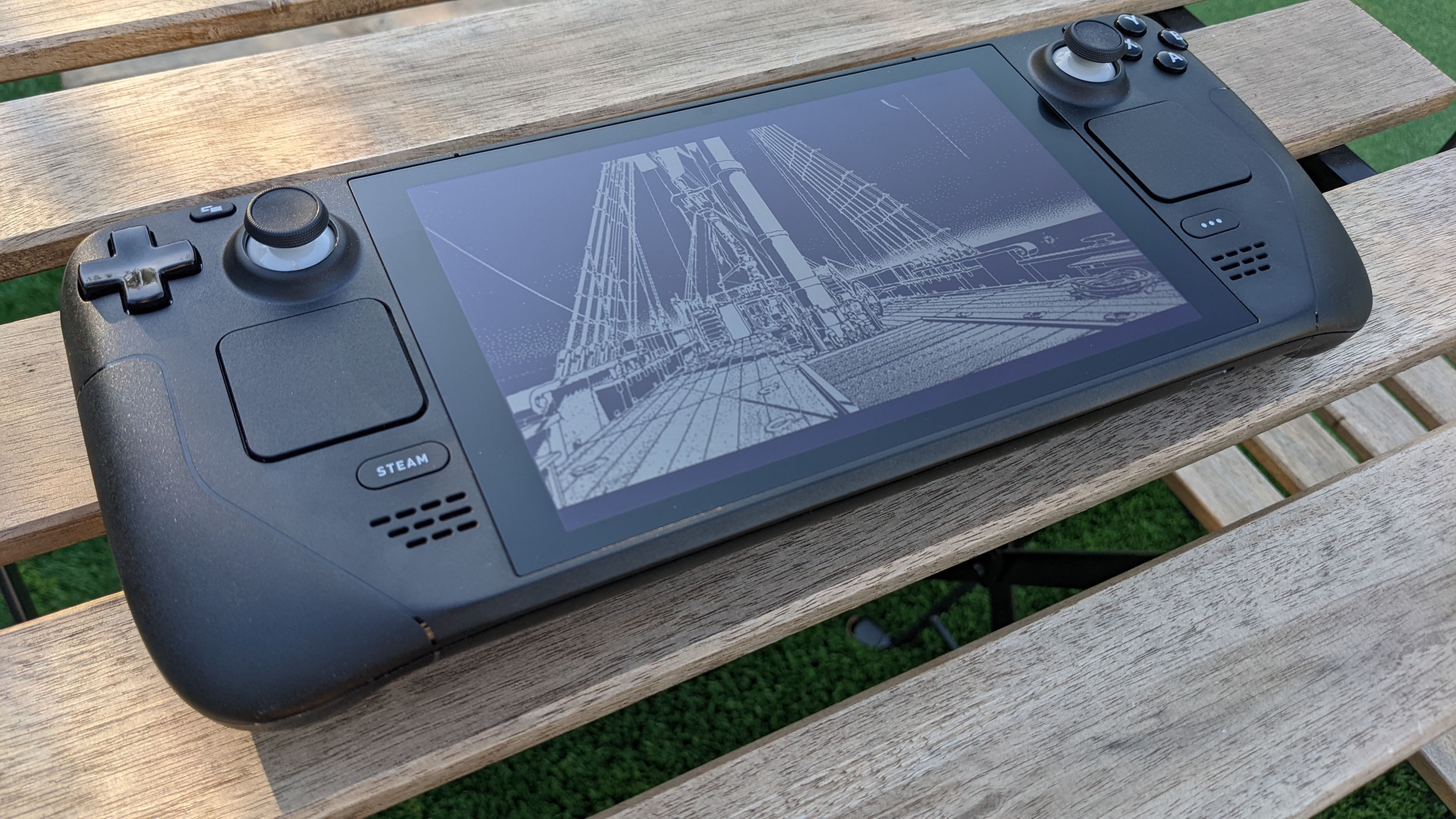As with any new portable technology, it’s important to ask whether the Steam Deck passes the Green Eggs and Ham test.
Do I like it in a house? Yes, as I wrote in my review—it’s a great portable gaming PC to play on the couch or in bed. Would I play it in a box? Sure, if we’re talking a refrigerator box. Could I play it in a car? No problem: the Steam Deck would be great for a long car trip, other than my likely nausea.
But would I like Steam Deck in a tree? Could I play it on a train? Would I, could I, on a boat, with or without a nearby goat?
These questions required some extra testing. I can’t call this a definitive Green Eggs and Ham verdict because I haven’t had a chance to play the Steam Deck on a train or boat yet, but I did spend some quality time with it outside on a very sunny day in San Jose, California. The model I have on hand is the high-end 512GB Steam Deck, which costs $649. Internally this version of the Deck is identical to the $529 Steam Deck, except its NVMe SSD has twice the storage capacity. The more significant distinguishing feature is the 512GB model’s “premium anti-glare etched glass,” which gives it more of a matte finish that should theoretically make the screen easier to see in direct sunlight. But I was skeptical it would really make the Steam Deck playable outside.
Indoors the Steam Deck’s 7-inch IPS LCD display is plenty bright, retaining color and detail even in a brightly lit room (it’s definitely nowhere near as vivid as an OLED, but it doesn’t look washed out, either). When sunlight was blasting in through my windows I’d usually play the system between 80% and 100% of max brightness, lowering it to around 50-60% after sunset. In bed with the lights off, turning the brightness to its lowest setting kept it from straining my eyes—I appreciate that the Deck can get bright enough and dim enough to suit different conditions.
I took the Steam Deck outside under a broiling cloudless sky, prepared to squint at it like my five-year-old laptop’s screen, but it’s better—dramatically better. At max brightness, with the sun beaming down over my shoulder, I could comfortably play most of the games I tested on the Steam Deck. I tried out Hades, Into the Breach, Monster Train, Astalon: Tears of the Earth, and Persona 3 and found I could still make out everything on the screen.
As with any display other than e-ink, the Steam Deck’s screen loses some vibrance in bright conditions. It’s not the ideal way to play, especially for a game where you’re excited to really soak in the art. But it’s definitely playable. The etched screen does seem to help diffuse the kind of glare that would otherwise make it almost impossible to see in direct light.



When I moved to a shady spot behind a wooden fence, the screen was even more comfortable to use, without any distracting glare at all. I have green eyes and have to squint in the face of bright sunlight even when I’m not trying to make out a screen, so playing in the shade was a relief. I still left the Steam Deck at max brightness, but regained some of the vibrancy that was blown out in direct sunlight.
To really stress the outdoor experience I played through the first few minutes of Dead Space 2, which is particularly dark. And there the Steam Deck’s display struggled: it was really hard to make out what I was looking at in lit areas, and I couldn’t make out what was on the screen in the dark areas at all. Even ratcheting the in-game brightness up to a washed out degree didn’t really help: I could tell the contrast sucked but still had trouble seeing where to go. That’s the one caveat on the Steam Deck’s outdoor playability: it’s good, but I think only an OLED or LCD with HDR-caliber brightness could make those kinds of black levels visible outside.
Playing in the shade felt like ample proof that the 512GB Steam Deck can easily hold up to gaming outdoors on a covered patio, or sitting by the window on a train, or even on a boat if you’ve got a nice canopy. I can see myself actively choosing to play the Steam Deck outside on a nice shady porch. As long as you’re not getting direct sunlight, you’re in great shape—and even direct sunlight is doable in plenty of games, just not really ideal. (One thing to keep in mind if you do try to play out in the sun: polarized sunglasses will clash with the LCD’s own polarization, so you’ll have to do without them.)
But if playing outside isn’t a major use case for you, I wouldn’t recommend spending the extra money just for the anti-glare screen. Without one of the cheaper models on hand I can’t do a direct comparison, but YouTuber The Phawx did briefly show off both models side-by-side in this video. He mentioned the anti-glare screen being a bit more fingerprint resistant, but anytime I used the touchscreen and went to take photos afterwards my fingerprints were there glaring at me, so don’t buy this model expecting it to be smudge proof.
Indoors the anti-glare etching seems like a bonus for playing in a brightly lit room, but not essential—the Steam Deck can get bright enough that you won’t be struggling to see the screen.
In an interview before the Steam Deck’s launch, Valve told me that it was surprised when the 512GB model of the Steam Deck proved to be the most popular. If you can do without the anti-glare screen, ordering the 64GB or 256GB model may not just save you money—it might also get a Steam Deck into your hands a little bit sooner. 🤞

